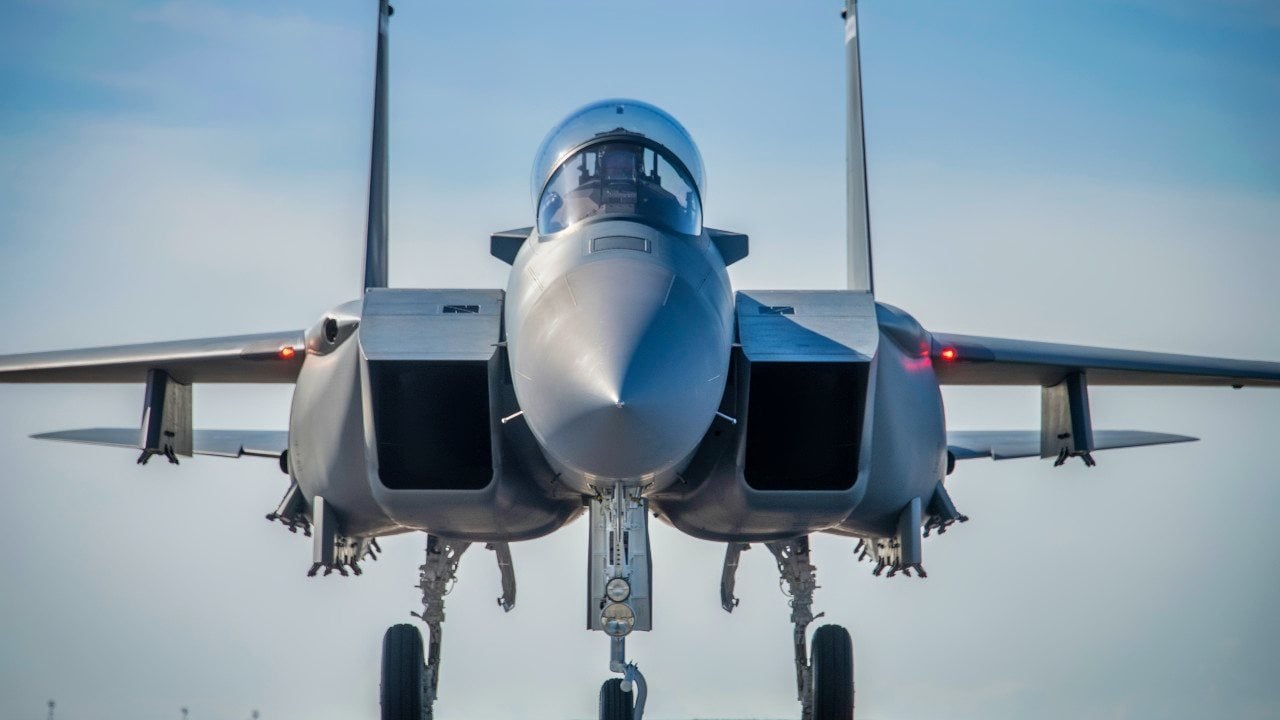Boeing's F-15EX Eagle II Fighter Dilemma Is Real
The U.S. State Department has approved an $18 billion sale of fifty new Boeing F-15EX fighter jets and upgrades to twenty-five existing Israeli F-15s. This deal aims to enhance Israel’s interoperability with U.S. systems, bolster its aerial defenses, and deter regional threats.
What You Need to Know: The U.S. State Department has approved an $18 billion sale of fifty new Boeing F-15EX fighter jets and upgrades to twenty-five existing Israeli F-15s. This deal aims to enhance Israel’s interoperability with U.S. systems, bolster its aerial defenses, and deter regional threats.

-The sale includes up to thirty advanced medium-range AMRAAM missiles for $102.5 million. Amidst increased scrutiny of U.S. military aid to Israel due to its actions in Gaza and Lebanon, questions arise about Boeing’s ability to fulfill the order.
-Boeing is ramping up F-15EX production from one to 1.5 aircraft per month, but meeting Israel’s demand for fifty jets may face delays.
U.S. Approves $18 Billion F-15EX Sale to Strengthen Israel’s Air Force
The State Department has approved the sale of Boeing’s new F-15EX to Israel. The $18 billion dollar sale consists of fifty brand new F-15EXs and upgrades to twenty-five existing Israeli F-15s.
The question now is: can Boeing deliver that many F-15EXs?
New F-15s for Israel …And More
According to the State Department, “incorporating F-15IAs into the Israel Air Force’s fleet of fighter aircraft will enhance Israel’s interoperability with U.S. systems and bolster Israel’s aerial capabilities to meet current and future enemy threats, strengthen its homeland defense, and serve as a deterrent to regional threats.”
The sale comes at a time when Israel’s military actions, in Gaza and Lebanon, are facing increased scrutiny in the United States. As much of Israel’s military capability is U.S.-provided, the U.S. citizenry is rightfully concerned with exactly how that military capability is being applied.
The new sale of fourth-generation-plus aircraft to Israel is likely to exacerbate criticisms that the U.S. should not be providing unconditional military aid to the Israelis.
Israel has been interested in an F-15EX variant since 2018 but did not issue a formal request until last year. The F-15s will not be sold alone, the State Department also approved the sale of up to thirty advanced medium range air-to-air missiles (AMRAAM) for $102.5 million.
“AMRAAMS are a key aerial combat capability used to defend against airborne threats, such as the missile and drone salvo launched at Israel on April 14,” the State Department noted. “The proposed sale will improve Israel’s capability to meet current and future enemy threats, strengthen its homeland defense, and serve as a deterrent to regional threats.”

Can Boeing Keep Up on F-15EX Eagle II Orders?
Boeing’s reputation has taken several high-profile hits in recent years. For good reason, too, namely the maneuvering characteristics augmentation systems (MCAS) debacle, and that little hatch-blowing-incident out of Portland International, which happens to be home for America’s first batch of F-15EXs.
By all accounts, however, Boeing’s updated F-15EX variant is a phenomenal product. The question remains, though, can Boeing’s production rate keep up with demand?
As Breaking Defense reported, F-15EX “production is increasing from a rate of one aircraft to about 1.5 aircraft per month” thanks to “about 150 new mechanics…who are working on the aircraft for the first time and are still building proficiency.”
“There’s a significant learning curve on F-15,” said Mark Sears, Boeing’s VP for fighters. “If you walk the F-15 [production] line, it’s kind of like a museum of what aerospace manufacturing is. You start in the back of the line, looks like it did in the 1969. You go to the forward part of the line, where we just digitally remastered the forward fuselage, and that’s advanced modern manufacturing techniques.”
So, at less than two F-15s per month, filling Israel’s fifty jet order is going to take some time, not to mention keeping up with the demands of the U.S. Air Force.
About the Author: Harrison Kass
Harrison Kass is a defense and national security writer with over 1,000 total pieces on issues involving global affairs. An attorney, pilot, guitarist, and minor pro hockey player, Harrison joined the US Air Force as a Pilot Trainee but was medically discharged. Harrison holds a BA from Lake Forest College, a JD from the University of Oregon, and an MA from New York University. Harrison listens to Dokken.
Image Credit: Creative Commons and/or Shutterstock.


